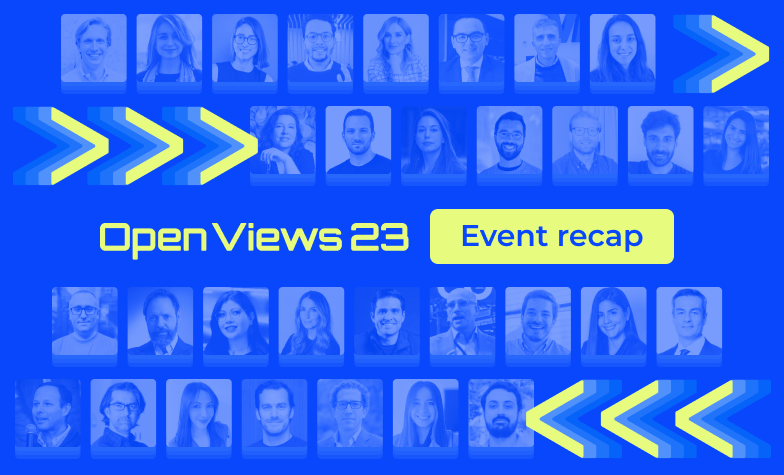Open Views 23, the second edition of the Open Views conference, powered by Belvo, brought together leaders from Open Finance and fintech across the globe to discuss how the model is already transforming the financial system in Latin America and enabling new solutions and products in the B2B and B2C segments.
With over 2k registers, 40+ speakers, and 18 panels, the ecosystem got together to discuss regulation, global trends, and success stories, as well as offer practical workshops on new use cases and best practices in the industry.
Spotlight: A2A payments and open finance
This year, one particular subject emerged in Open Views 23 as a major innovation to which financial innovators are looking towards: open finance payments, in the many ways it can look across the globe. The A2A models, as Jesper Henriksson, VP of Corp Dev & New Markets at Tink, mentioned during a payments-focused panel, has the best of many worlds to different parts of the ecosystem.
For end-users, it is a great experience that is fast, is familiar, a bank transfer that everyone knows, and reliable. For merchants, it’s low cost, low friction, low fraud, typically instant, and primarily available to every customer that has a bank account. For banks, it means the potential to track new customers and revenue streams and, for central banks and authorities, A2A payments foment financial inclusion and the move from cash to digital payments
Jesper Henriksson, Tink
One of the main examples that come up during this conversation is Brazil’s Pix, with its massive adoption in a little over 2 years of existence, and the potential of open finance to improve the customer and seller experience of this payment method and, through payment initiation services, offer 20% more payment conversion than the traditional Pix. With this in mind, we decided to offer a workshop for Brazilian innovators about A2A payments and Open Finance with Ana Luiza Castro, Belvo’s Senior Open Banking Manager.
Spotlight: new credit with open finance
Another key topic that was made present in many of our Open Views 23 discussions was the power of open finance data for lenders. From building better native credit models for both final customers and B2B to open finance-based credit scores and, most important of all, the potential of this technology towards driving financial inclusion, our guests had a lot to say about how their innovative companies are taking advantage of new sources of data in order to get ahead in the game and drive meaningful change in the countries they operate in.
Players from FICO to Mercado Libre, Transunion, Banco de Bogotá, Visa, and FDATA, as well as regulators like Banco Central do Brasil, shared their insights about the credit revolution that is being leveraged by Open Finance. For Mercado Livre, this means more credit lines approved for end customers and sellers. According to Daniel Issa, from Mercado Credito’s operations in Brazil, 3% of all merchant credit in the company is already generated via Open Finance, a number that is still small but, in a short time operating with the model, already shows great potential and has made the company prioritize open finance initiatives in its operation.
Regarding more trends in credit, FICO’s Head for Latin America Pablo Morales mentioned the potential of not only having access to Open Finance data but also the relevance of the new score models being created that leverage this data and offer a simpler experience for institutions that don’t want to bear the cost of maintaining the infrastructure needed to collect and process raw data within this scope: “Scores are a way of delivering open finance data without the raw data, allowing institutions to view the information in a simplified manner and process it quickly, almost in real-time, without having to handle entire databases coming from all directions. The idea is to transform the complexity of the data into something very simple so that the merchant can use this data, the lender can use this data, and the customer can use this data in a transparent manner”, says Pablo.
Also, in open finance there is the capability for that score to be quickly refreshed. So, a customer who pays off debt in open finance can improve their score and enable the market to offer credit within a matter of days, at a speed that the traditional score doesn’t have. The conventional score system, 50 years ago, allowed ordinary people to access credit and included many in the financial system. Open finance is providing this opportunity to more people and will enable a large portion of the population to have it. This has an incredible and powerful social effect
Pablo Morales, FICO
Spotlight: banks and neobanks are ready for change
During Open Views 23, we also witnessed how more and more major players are approaching open finance. On one hand, we heard perspectives on these new models from corporations like TransUnion and neobanks like Nubank in Colombia.
“Open finance has the ability to transform how we engage with the financial system […]. It is an incredibly powerful global trend, and it is crucial for the country to embrace this reality so that people can own their data and take it wherever they choose,” explained Óscar Cadena, Director of Public Affairs at Nu Colombia, during a fireside chat.
We also listened to the opinions of leaders from major financial institutions with the help of representatives from banks such as BBVA, Citi, and Santander in Mexico, and Bancolombia, Banco de Bogotá, and Davivienda in Colombia. In this context, the panelists agreed on how digital banking is moving towards increasingly personalized services and how it can leverage open finance to better understand its users and offer its own services through third-party channels where users already consume products on a daily basis.
Sharing information is just the first piece of open finance. But I like to think of it as the ability for banks to break down our internal routines into small fragments and make them available on third-party platforms
Hugo Nájera, Head of Client Solutions at BBVA México.
Spotlight: regulation advances in Latin America
Finally, another key topic of the event was regulation and how it is progressing in different markets to facilitate the adoption of new data exchange and digital payment models. Various representatives from fintech associations and regulatory entities in each country, such as the Central Bank of Brazil, Fintech Mexico, the Central Bank of Colombia, and the Financial Regulation Unit of Colombia, accompanied us.
In the case of Colombia, the discussion focused on the latest regulatory advancements that have taken place in the country since the introduction of the open finance decree in 2022, and how the foundations of a new digital infrastructure are already being laid.
The open finance decree was the starting point of a conversation to empower financial consumers. Now we must be able to use the data to the user’s advantage and connect them to the entire payment ecosystem efficiently, securely, and reliably in the digital environment
Ana María Prieto, Director of Payment Systems at the Central Bank of Colombia.
👉 See all panels, interviews, and workshops from #OpenViews23, separated into 4 tracks: regulation talks, success stories, global trends, and workshops.
Opening keynote with Belvo’s founders
Regulation talks: the state of Open Finance regulation in Brazil, Colombia, and Mexico
🇧🇷 “Brazil is already a world leader in open finance regulation – what can other regions learn?”, with Banco Central do Brasil, ABFintechs, and FDATA.
🇨🇴 “Colombia’s next steps to regulate open finance – what comes after the 2022 decree?”, with Banco de La República, Colombia Fintech, and URF
🇲🇽 “Will there be a Fintech 2.0 Law in Mexico?”, with BBVA, Fintech Mexico, and HSBC
Success Stories: how banks, neobanks, and fintech companies are leveraging open finance
🇨🇴 🇲🇽 “Open finance as a tool for financial inclusion”, with Kueski, Visa, Aplazo, TicTank, and Latam Fintech Hub
🇲🇽 “Towards the personalization of services: digital banking and open finance trends in Mexico”, with BBVA, Citibanamex, Santander, and Emprendedor
🇧🇷 “Building credit scoring models with open finance data”, with FICO and Mercado Crédito
🇨🇴 “Trends in digital banking and open finance in Colombia: opportunities and next steps”, with Bancolombia, Banco de Bogotá, Davivienda, SoyYo, and Fedesoft
🇲🇽 Fireside chat with Mercado Libre México
🇧🇷 Fireside chat with Mercado Livre Brasil
🇨🇴 Fireside chat with Transunion
🇨🇴 Fireside chat with Nu Colombia
🇧🇷 Fireside chat with Nibo: automating ERPs with Open Finance
Global trends at Open Views 23: the latest in Open Finance across the world
🇺🇸 “Fintech trends and opportunities in 2023: what’s next for the ecosystem?“, with QED Investors, Shapers, and Insight Partners
🇺🇸 “Global open finance and A2A payment trends worldwide“, with Tink, Truelayer, and Trustly
Workshops: learn from experts about the latest Open Finance use cases and best practices
🇺🇸 Machine Learning and Open Finance Data, with Onur Simsek, Product Manager at Belvo
🇺🇸 Improving credit decisions with open finance, with Aritz Amasene, Head of Credit Risk at Belvo
🇧🇷 A2A payments with open finance, with Ana Luiza Castro, Open Banking and Payments Sr Manager at Belvo
See you next year for Open Views 24! 👋




